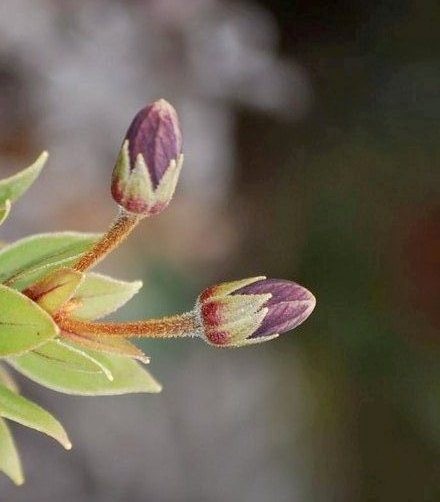Pacific loosestrife
(Lysimachia daphnoides)

Description
Lysimachia daphnoides is a rare species of flowering plant in the Primulaceae known by several common names, including Pacific loosestrife, lehua makanoe, kolekole lehua, and kolokolo kuahiwi. It is endemic to Hawaii, where there are only three populations remaining on the island of Kauai. It was federally listed as an endangered species of the United States in 2010. This is a small shrub growing up to about half a meter in maximum height with a dense covering of leathery leaves. Dark red or purple flowers occur in the leaf axils. The plant is a member of the boggy wet mountain ecosystem in Alakai Wilderness Preserve and Na Pali Kona Forest Reserve on Kauai. There are three known populations for a total number of plants between 200 and 300. The flowers of this plant were traditionally used in leis. Lysimachia is a genus consisting of 193 accepted species of flowering plants traditionally classified in the family Primulaceae. Based on a molecular phylogenetic study it was transferred to the family Myrsinaceae, before this family was later merged into the Primulaceae. Lysimachia species often have yellow flowers, and grow vigorously. They tend to grow in damp conditions. Several species within Lysimachia are commonly called loosestrife, although this name is also used for plants within the genus Lythrum. The genus is named in honor of Lysimachus, a king of ancient Sicily, who is said to have calmed a mad ox by feeding it a member of the genus. Lysimachia species are used as food plants by the larvae of some butterflies and moths, including the dot moth, grey pug, lime-speck pug, small angle shades, and v-pug.
Taxonomic tree:







